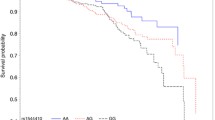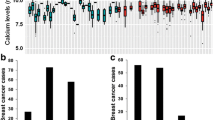Abstract.
Background and aims: In vivo and in vitro experiments show the protective role of calcium ions (Ca2+) against colorectal cancer. The calcium-sensing receptor (CaSR) detects extracellular Ca2+ concentration. An association between the CaSR A986S polymorphism and serum calcium in healthy adults has been reported. Subjects with AA genotype had lower serum concentrations of Ca2+ than other genotypes. The expression of erbB-2, epidermal growth factor receptor (EGFR), p53, and ras in colorectal cancer has been suggested to have diagnostic and prognostic significance. Patients and methods: We investigated the relationship between the CaSR A986S polymorphism and the expression of erbB-2, EGFR, p53, and ras as well as the UICC stage in 56 patients with rectal cancer. Results: The occurrence of the genotype AA was not different in cancer patients and in 112 controls. In the presence of the coexpression of major oncogenes, patients with genotype AA were in significantly higher UICC stages than in the case of AS genotype. During the follow-up period AA genotype showed a tendency for poor prognosis. Conclusions: Our observation raises the possibility that genetic alterations of CaSR influence the pathogenesis of rectal cancer.
Similar content being viewed by others
Author information
Authors and Affiliations
Additional information
Electronic Publication
Rights and permissions
About this article
Cite this article
Speer, G., Cseh, K., Mucsi, I. et al. Calcium-sensing receptor A986S polymorphism in human rectal cancer. Int J Colorectal Dis 17, 20–24 (2002). https://doi.org/10.1007/s003840100359
Accepted:
Published:
Issue Date:
DOI: https://doi.org/10.1007/s003840100359




